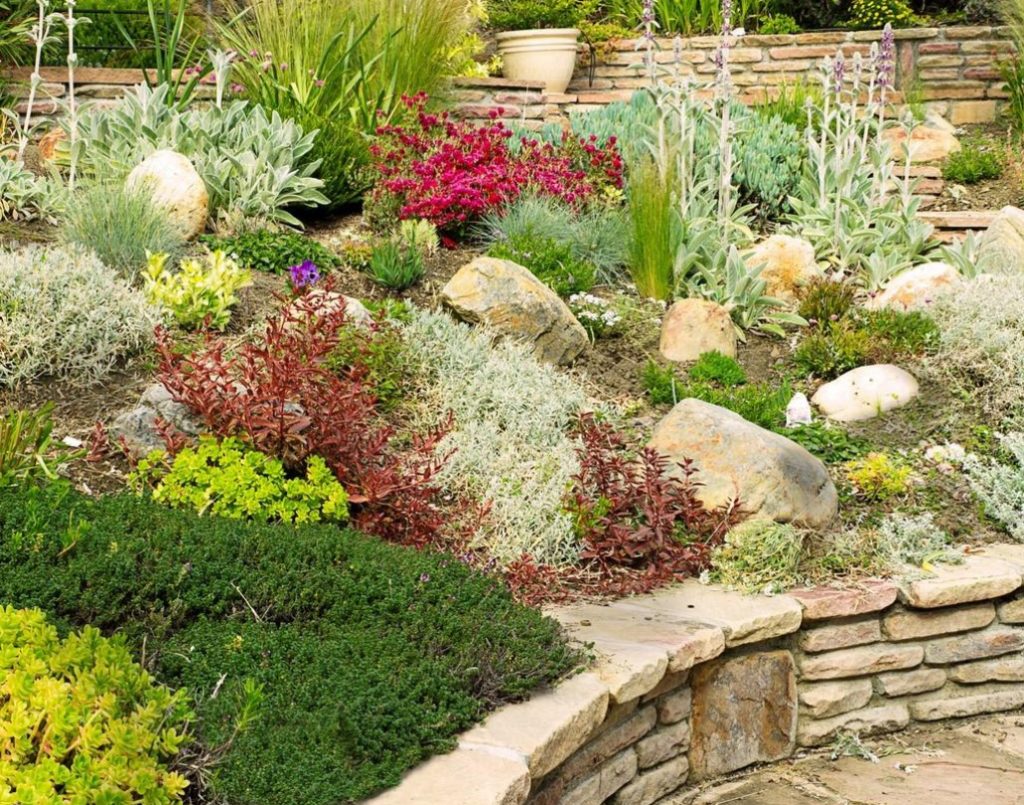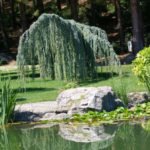Creating a harmonious rocky composition is often a challenging but rewarding task for gardeners and landscape designers alike. Whether you’re planning a small urban rock garden or an expansive alpine rockery, the desire to incorporate natural stone elements into your garden often surpasses any doubts about the outcome. Before beginning your landscaping project, it’s important to identify which type of rock garden aligns best with your personal style, local climate, soil conditions, and gardening capabilities.
Stones in the Garden: The Foundation of Beautiful Rockeries
In landscape architecture, terms such as rock garden, rocky hill, Alpine hill, and rockery describe garden compositions where natural stones are artistically combined with diverse plants. Stones symbolize permanence, stability, and natural beauty, creating a timeless contrast to the seasonal changes of plants. Using stones in landscaping enhances garden texture and adds an organic element that can dramatically elevate your outdoor space.
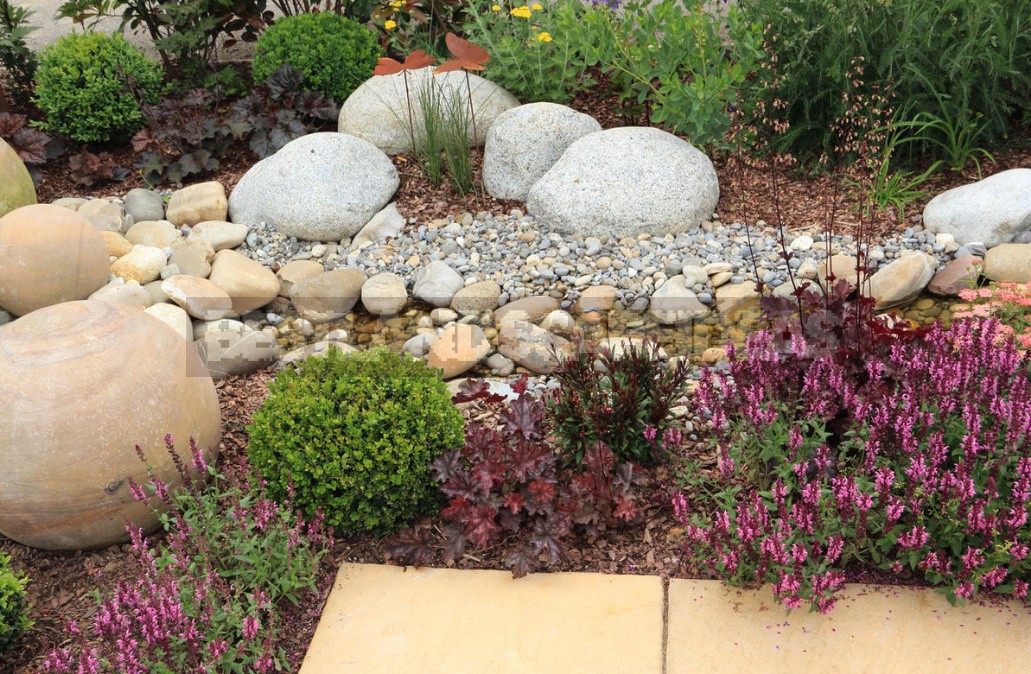
The phrase “rock garden” often refers to compositions inspired by the Alpine mountain belt, where rugged stones and climbing plants coexist in harmony. These gardens are popular in botanical gardens worldwide, designed to emulate mountainous terrains. The term “rockery” is sometimes preferred, as it emphasizes a carefully curated arrangement of plants of various origins set against a natural stone backdrop, enhancing visual interest and biodiversity.
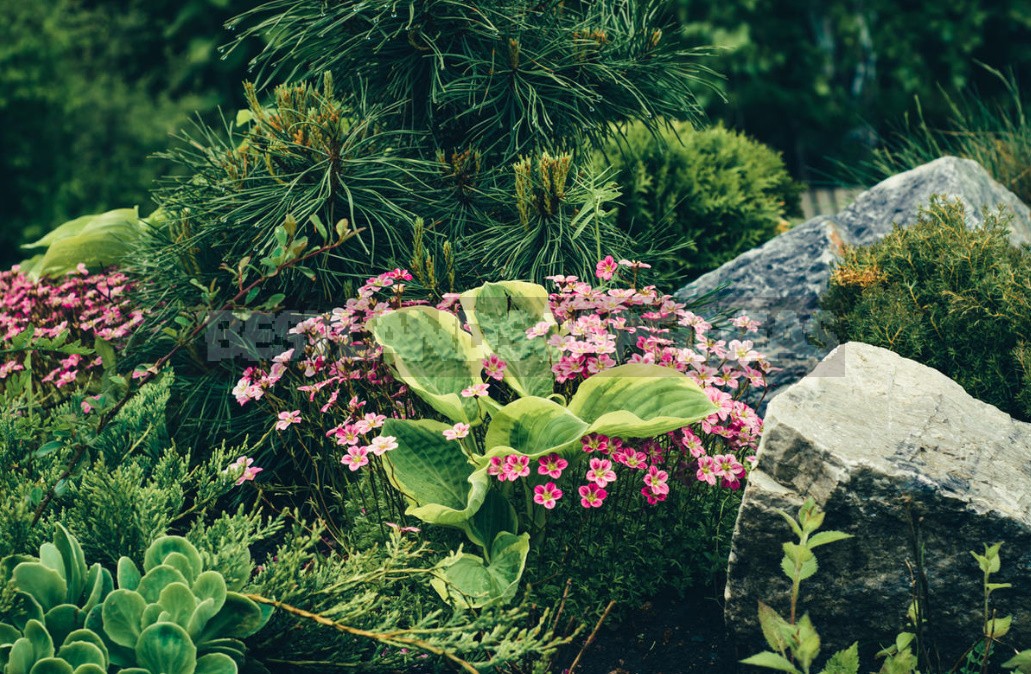
Rockery Type 1: Rocky Hill – Naturalistic Elevated Rock Garden
A rocky hill rock garden is created by forming a small mound, usually not exceeding 2 meters (approx. 6.5 feet or 78 inches) in height, using site debris, soil excavated from foundations, and other natural materials. The hill’s surface is layered with fertile soil about 30–50 cm deep (12–20 inches) to support plant growth. Large stones are used on expansive hills, while smaller stones suit compact ones, ensuring harmonious proportions. Stones are partially buried at angles to mimic natural rock outcrops, providing shade and moisture retention for plants’ roots.
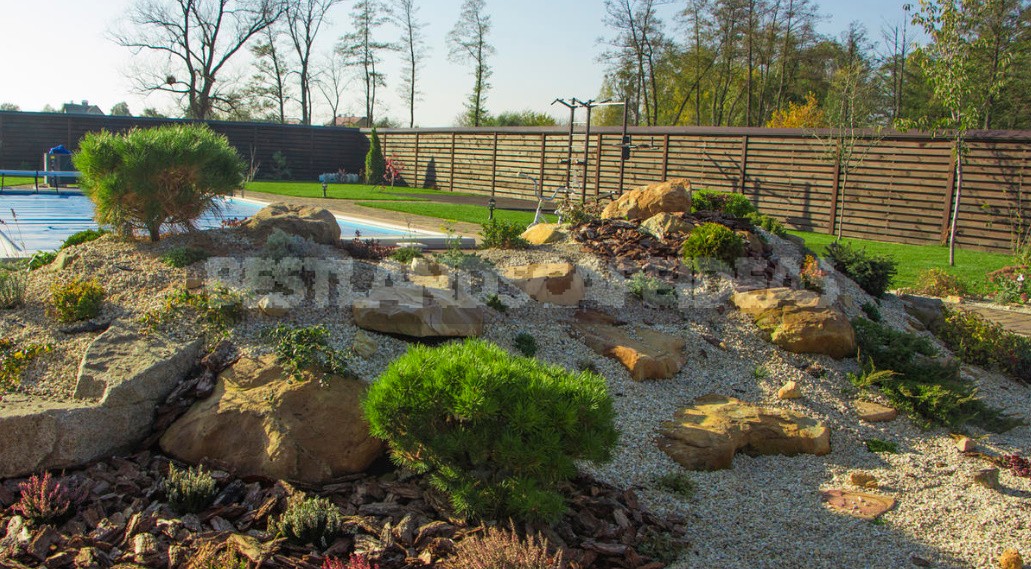
This type of rockery often incorporates pebbles and rounded stones of varying colors and sizes (typically 2–15 cm / 0.8–6 inches) to add texture and visual depth. However, gardeners should be mindful of invasive perennial weeds such as Sonchus, Aegopodium podagraria, and Elytrigia whose rhizomes spread under stones, complicating maintenance. Moreover, slopes tend to dry quickly, so implementing efficient irrigation or choosing drought-tolerant plants is essential for sustainable care.
Rockery Type 2: Terraced Rock Gardens – Functional and Elegant Layered Landscaping
Terraced rock gardens involve building a series of stone steps or terraces along a slope or adjacent to stone fences, enhancing both aesthetics and soil retention. Step widths vary from narrow (25–30 cm / 10–12 inches) to wide (up to 2 meters / 6.5 feet). Each terrace consists of a lower drainage layer (approx. 10–15 cm / 4–6 inches) of crushed stone or expanded clay, topped with 20–25 cm (8–10 inches) of fertile soil. Retaining walls support the structure, allowing each level to serve as a separate flower bed.
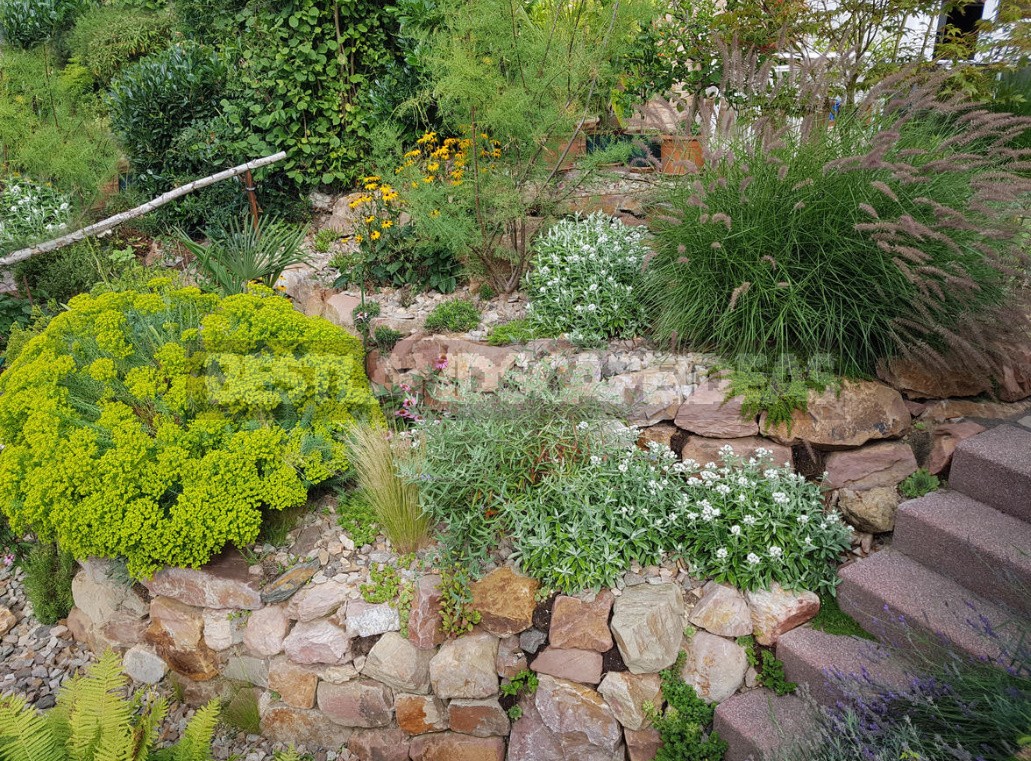
Plants with trailing or hanging growth habits thrive in this environment. Examples include Lathyrus (sweet peas), Campanula species, and Sedum. The thin soil layer on terraces demands drought-resistant varieties such as Hemerocallis, Liatris, Artemisia (sagebrush), and other hardy perennials that form dense cushions and reduce soil erosion.
Rockery Type 3: Retaining and Dry Stone Walls – Rustic Beauty with Structural Integrity
Dry stone walls are constructed by stacking stones without mortar, creating gaps filled with planting soil. This technique supports plants adapted to shallow, well-drained soils such as saxifrages, sedums, oenothera, Campanula rupestris, and Sempervivum. These walls blend functionality with rustic charm, supporting terraces or flower beds while providing habitats for pollinators and small wildlife.
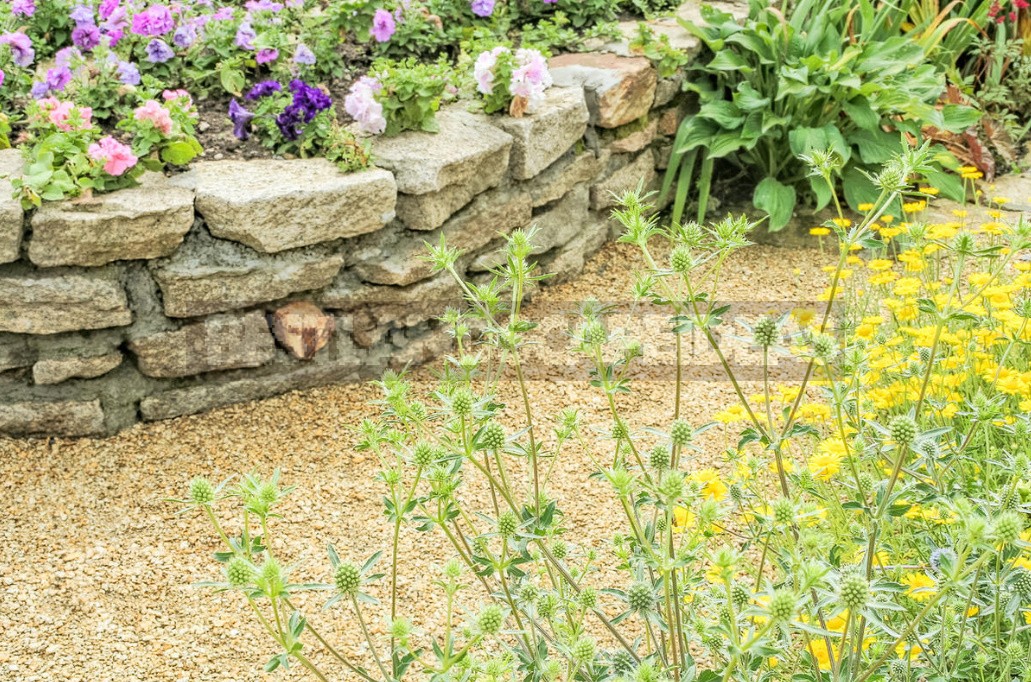
There are two common dry wall styles: bilateral walls, which consist of two stone rows filled with soil (wall width approx. 30–50 cm / 12–20 inches), and retaining walls, built to support terraces or garden beds. While professional masonry ensures durability for double-sided walls, DIY gardeners can successfully build retaining walls using limestone or sandstone — materials favored for their workability and natural appearance.
Rockery Type 4: Flat Rock Garden – Expansive, Panoramic Landscapes
Flat rock gardens are designed on level terrain, offering a sweeping view that fully showcases the combination of stones and plants. Such gardens emulate natural northern landscapes where large boulders (commonly 50–150 cm / 20–60 inches in diameter) remain as relics of the Ice Age, shaping the emotional and visual character of the space.
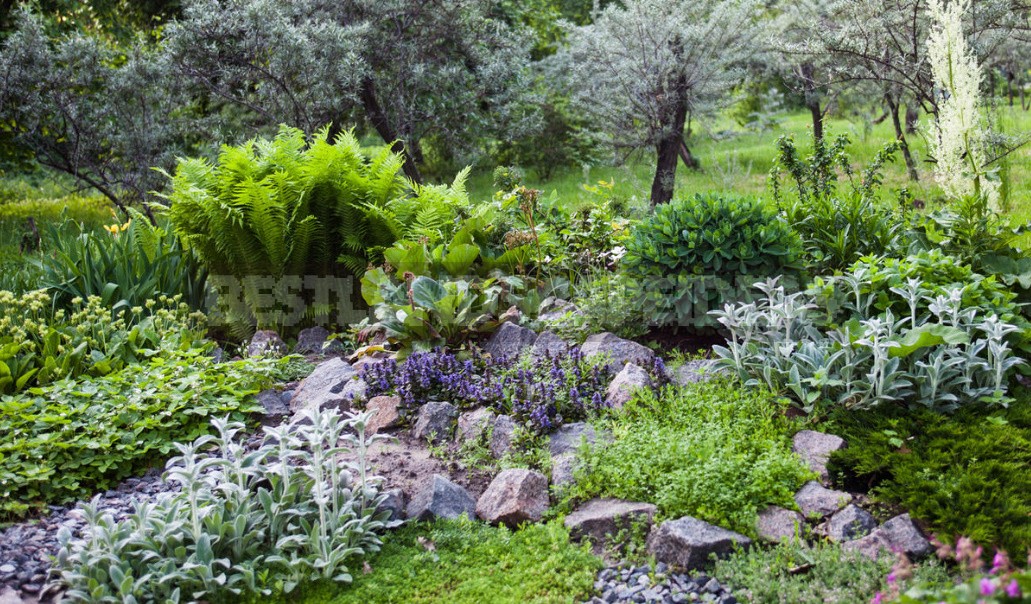
These gardens are easier to build and maintain compared to elevated rockeries and provide a more stable microclimate for plants, protecting them from excessive drying and frost. Select a sunny, prominent area typically ranging from 10 to 15 square meters (108–161 sq. ft.) — ample space to display diverse plant forms and stone textures, creating an impactful garden feature without excessive expense.
Begin by drafting a detailed plan marking stone and plant placements to balance aesthetics and functionality.
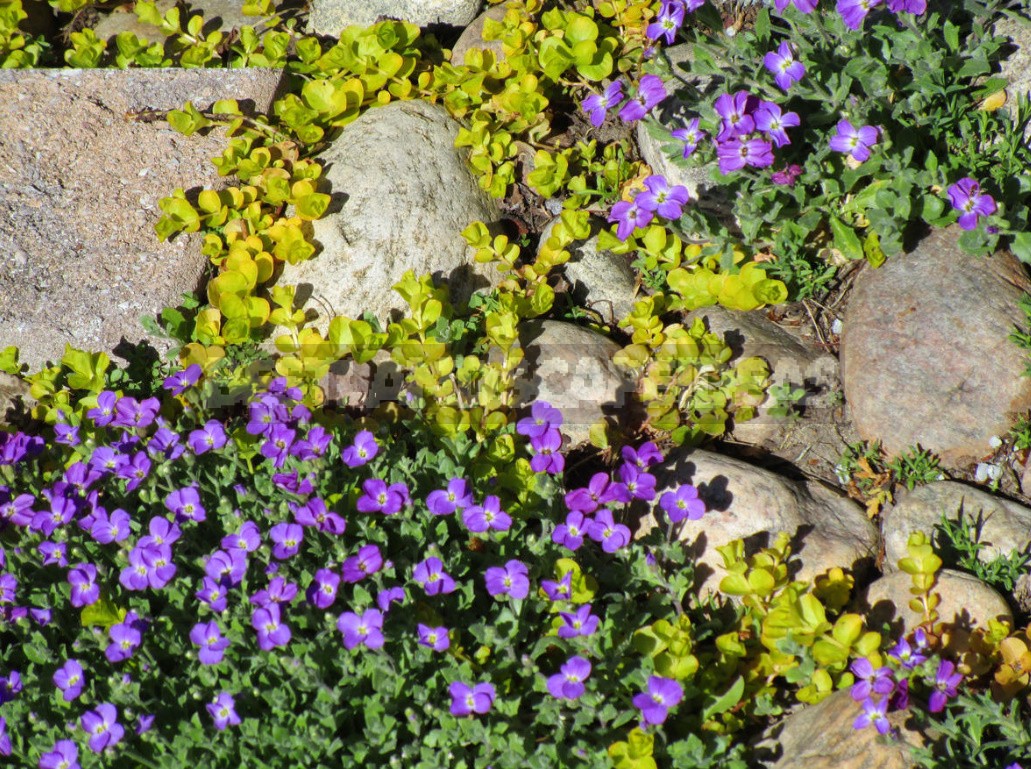
Prepare the site by leveling the ground and removing perennial weeds. Lay a perforated weed barrier film in places where stones will be set to facilitate water drainage and prevent weed growth beneath the rocks. Add an inert top layer of gravel, pebbles, or sand (approx. 5–10 cm / 2–4 inches thick) on top of the film to further inhibit weeds and improve soil moisture retention.
Plant selection is crucial; opt for evergreen, low-growing, and decorative species that won’t aggressively spread or crowd each other. Plants with unique bush forms add architectural interest and year-round appeal.
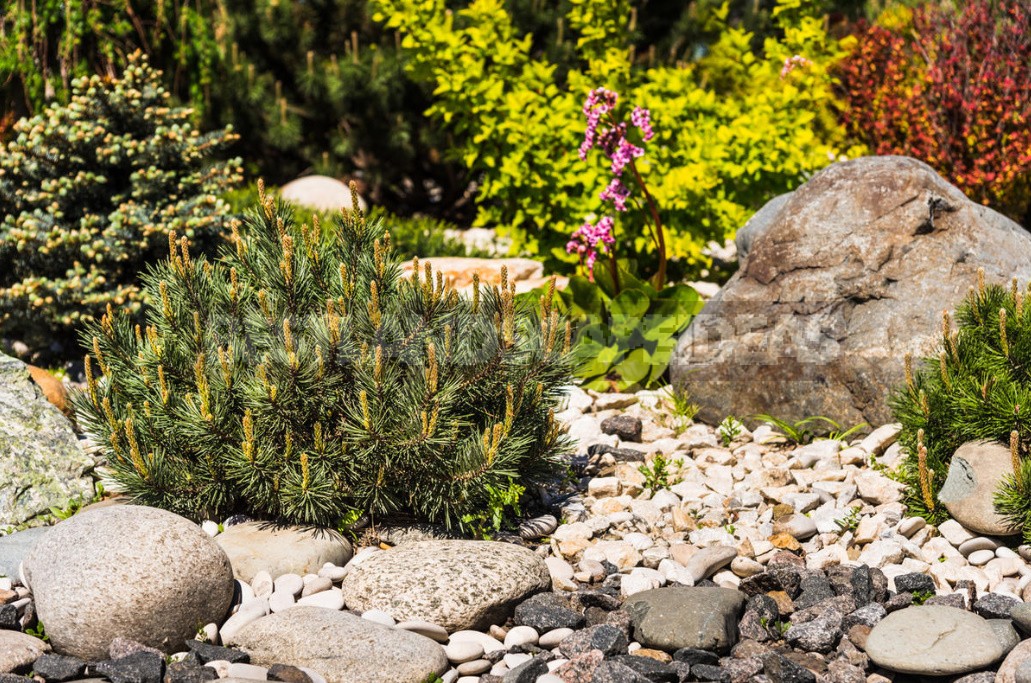
Excellent plant choices for rock gardens include Bergenia, Viola cornuta, Little Lanterns, Iris pumila, Pulmonaria saccharata, Aster alpinus, Geranium sanguineum, Geum coccineum, and Oenothera missouriensis. These species combine beauty with resilience, thriving in well-drained rocky soils.
